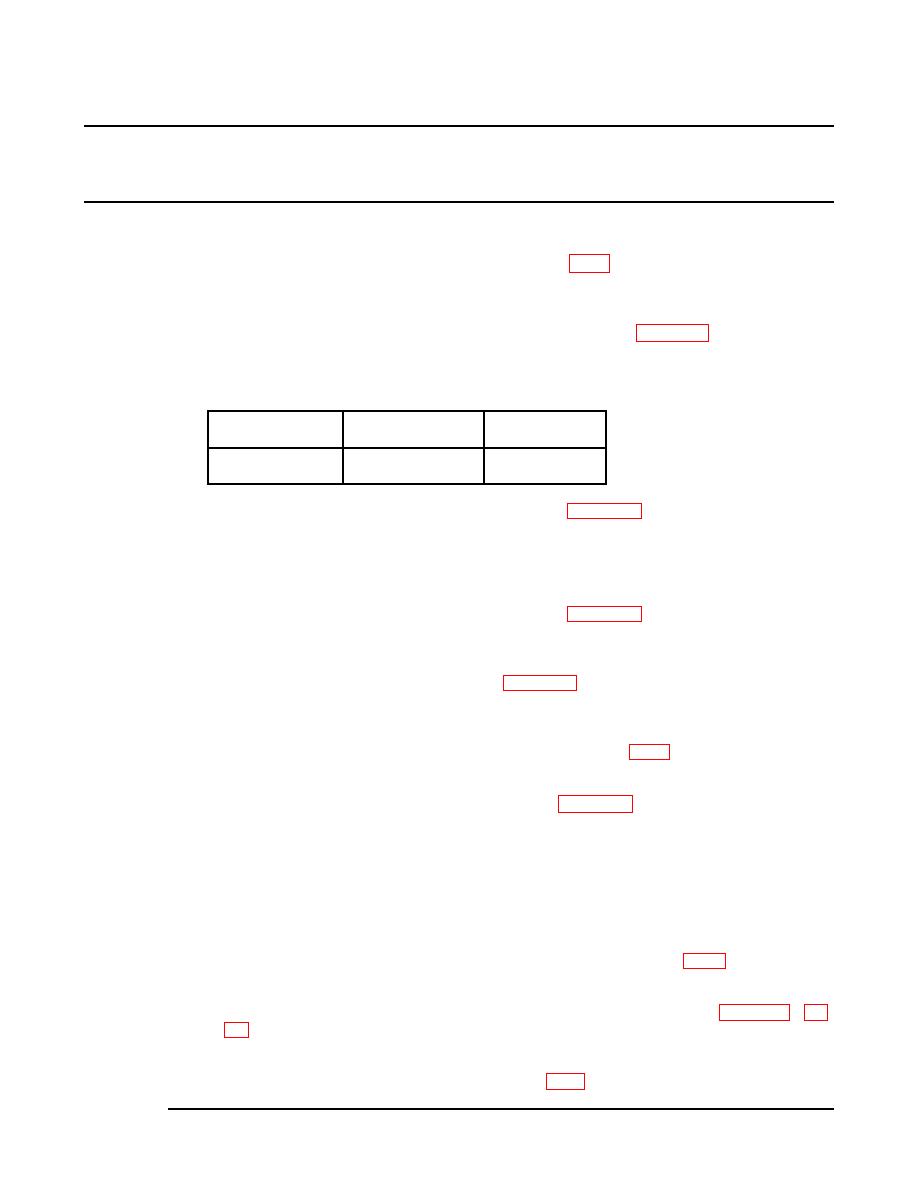
TM 9-2330-357-14&P
Table 4-2. Organizational Troubleshooting (Con't).
MALFUNCTION
TEST OR INSPECTION
CORRECTIVE ACTION
Step 3.
Disconnect cable at outrigger actuator and check for 24 V dc to ground at pin F.
Check wiring harness if 24 V dc is not present (see FO-1).
Step 4.
Check pins E and F on outrigger actuator connector for less than 1 ohm resistance.
Replace outrigger drive motor if more than 1 ohm resistance (para 4-50).
Step 5.
Jumper pins E and F on cable. Have another person hold outrigger switch first in up
position, then in down position. Check for following indications:
Pins A and D
Pins B and C
Pins G and H
24 V dc
24 V dc
24 V dc
Replace outrigger drive motor if voltage is present (para 4-50).
Replace relay panel if voltage is not present.
Step 6.
Check for defective outrigger control panel switches.
Replace defective outrigger control panel switches (para 4-22).
Step 7.
Check for defective outrigger drive motors.
Replace defective outrigger drive motors (para 4-50).
Step 8.
Check for defective or damaged wiring harness.
Replace or repair defective or damaged wiring harness (see FO-1).
Step 9.
Check for defective or damaged outrigger actuator.
Replace defective or damaged outrigger actuator (para 4-48).
14. OUTRIGGER INTERLOCK SYSTEM INOPERATIVE.
Step 1.
With all outriggers positioned 50 or greater below horizontal of semitrailer bed, test for
continuity at interlock harness receptacle. Test should show a "closed" circuit between contacts
A and B. Any one outrigger, when raised to less than 50 below horizontal will "open" interlock
circuit.
Replace interlock harness receptacle if continuity is not present (see FO-1).
Step 2.
Test individual upper and lower outrigger limit switches for continuity.
Replace upper or lower outrigger limit switches if continuity is not present (para 4-24 or 4-
Step 3.
Check interlock wiring harness for frayed, cracked, or broken condition.
Replace defective interlock wiring harness (see FO-1).
4-17

